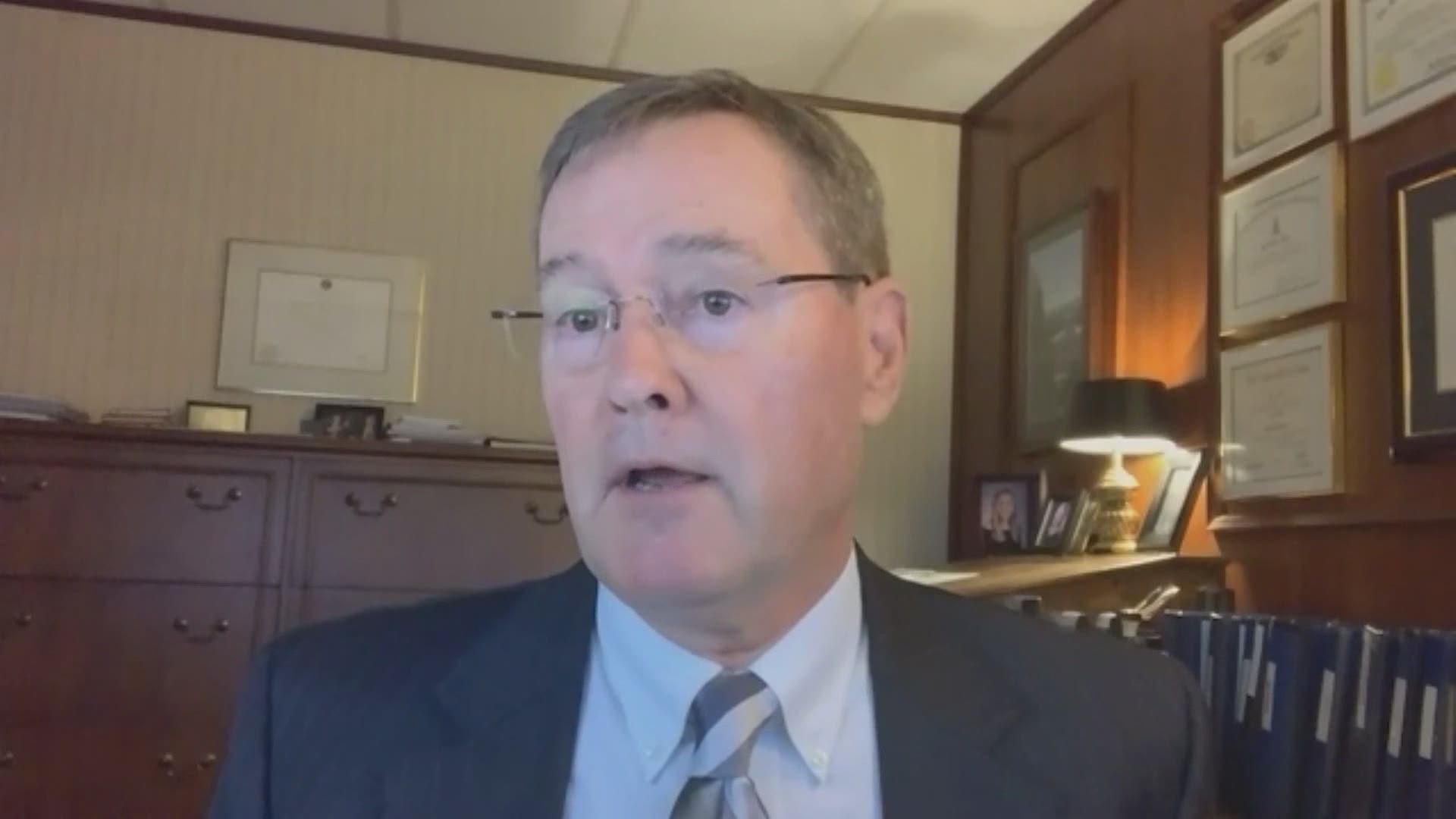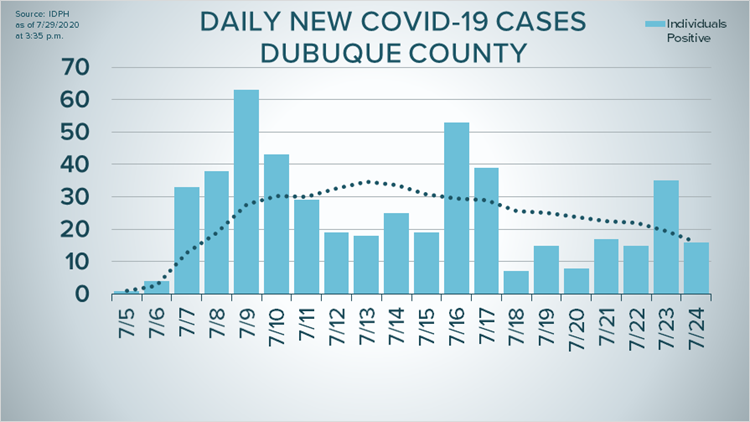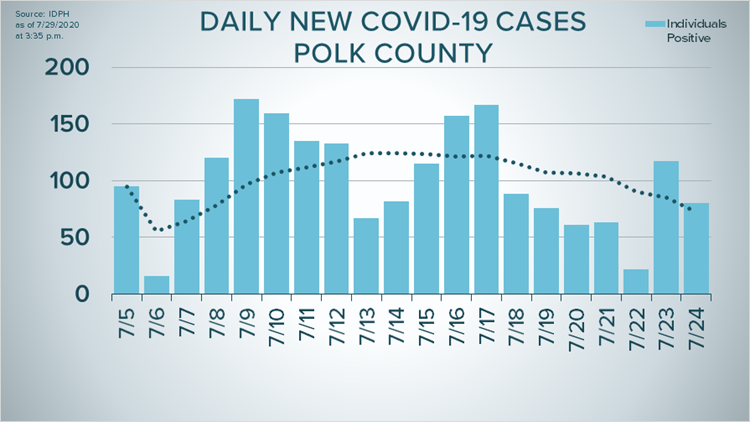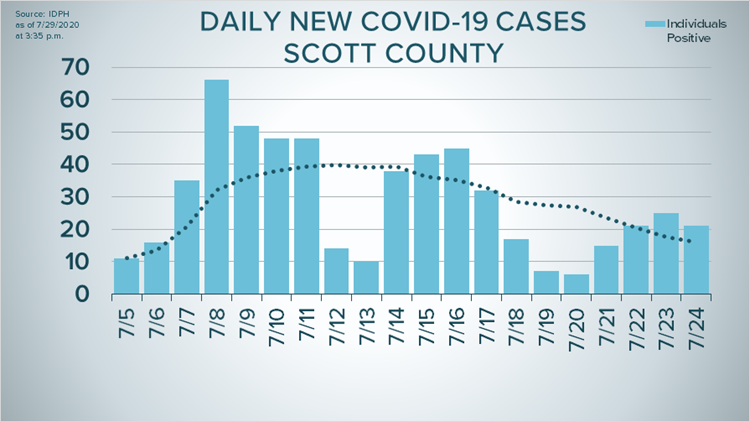DES MOINES, Iowa — The Center for Public Integrity obtained a report prepared for the White House coronavirus task force on July 16 that details more than a dozen states considered to be in the “red zone” for COVID-19 cases.
ABC News obtained an updated version of the document this week, as did the New York Times. The report, dated July 26, is 410 pages long.
The full report can be read at the bottom of this article.
A total of 21 states are listed in this new version, which is three more than the one released on July 16.
Iowa is included on both reports. Let’s break down what this means for the state.
What does "red zone" mean?
The report says that an area is in the “red zone” when new reported cases are above 100 per 100,000 population and a test positivity rate result is above 10%.
Iowa is in the red zone because more than 100 new cases per 100,000 population were confirmed last week.
The report says Iowa had 106 new cases per 100,000 population from July 18 to July 24. The national average is 140 per 100,000 cases, according to the document.
The graph below shows Iowa’s daily confirmed cases from July 5 to July 24.


Polk, Scott and Dubuque counties are areas of focus in the report. These counties had the highest number of new cases over the past three weeks. The report says these counties represent 36.9% of new cases in Iowa.
Counties with the most cases Iowa
However, only Dubuque County is listed in the red zone.
Here’s the full list of counties in the red zone:
- Dubuque
- Marshall
- Franklin
- Wapello
- Hardin
- Emmet
- Lyon
- Montgomery
The report also breaks down three Iowa cities listed in the red zones:
- Dubuque
- Marshalltown
- Ottumwa
Each county and metro area listed above reported new cases above 100 per 100,00 population and a positivity rate above 10% during the time of this report.
More than half of Iowa counties are in the "yellow zone"
The “yellow zone” indicates an area where reported new cases are between 10 to 100 per 100,000 population as well as a positivity rate between 5% to 10%.
The State of Iowa is in the yellow zone for test positivity.
Iowa’s positivity rate from July 18 to 24 was 6.9%, according to the report.
The graph below shows the daily positivity rate for the entire state from July 5 to July 24 as reported by the Iowa Department of Public Health.

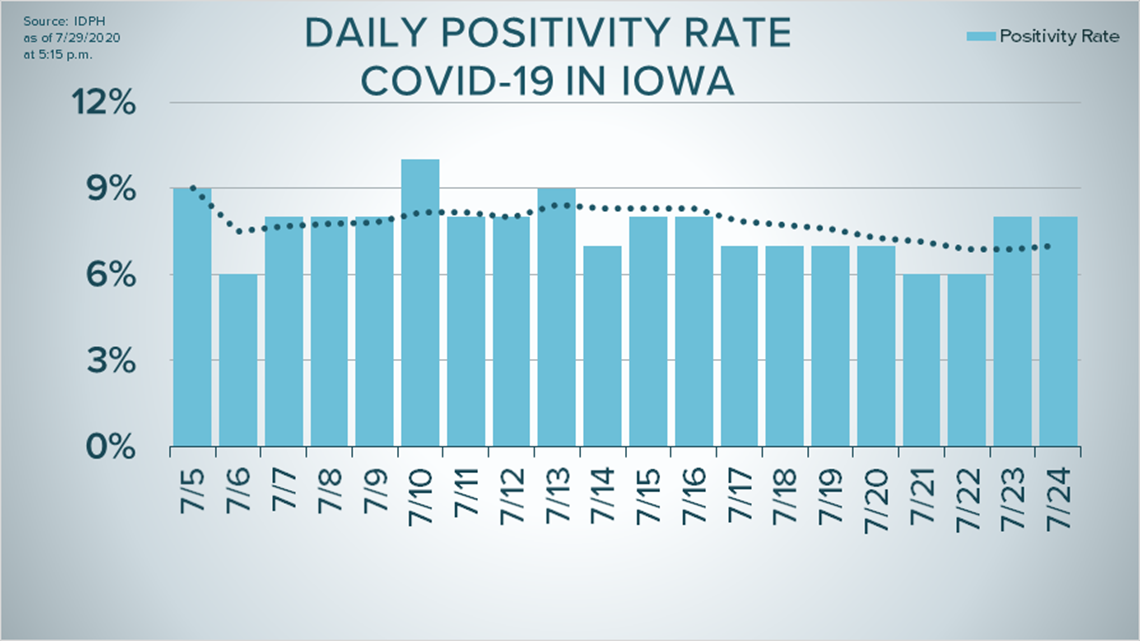
A total of 14 metro areas are listed in report's "yellow zone":
- Des Moines-West Des Moines
- Waterloo-Cedar Falls
- Cedar Rapids
- Fort Dodge
- Mason City
- Omaha-Council Bluffs
- Sioux City
- Ames
- Muscatine
- Clinton
- Spirit Lake
- Storm Lake
- Carroll
- Spencer
53 counties are listed in the yellow zone.
The map below shows the counties under both red and yellow zones. A red star means the county is in the red zone and a yellow star means they're in the yellow zone.


What does this mean for Iowans?
The report recommends Iowans living in the red zone counties to wear a mask at all times outside the home and maintain social distancing practices. They also suggest limiting social gatherings to 10 people or less, that means staying away from bars, nightclubs and gyms.
Its other recommendations include:
- Eating takeout or at outdoor venues where social distancing is easier to manage. It also suggests reducing public interactions and activities by 25%.
- Public officials should close bars and gyms and create outdoor dining opportunities with pedestrian areas.
- Public officials should limit social gatherings and institute routine weekly testing of all workers in long-term care facilities.
The report also suggests more access to testing by moving to community-led neighborhood testing.
Marshalltown Mayor Joel Greer told Local 5's Rachel Droze that the City can't do much to require mitigation measures like mask mandates or business closures.
"The only power I have right now, I think legally, is to enforce city buildings," Greer said. "And so last week or the week before I did say, "All right folks, you're not going to come into one of our city facilities without a mask.""
Greer said he wants help from the state or federal government.
"I really wish we would get a directive from the president. If not, they're done from the governor's office. And if there were anything else I could do, I would be doing."
Looser guidelines are suggested for those living in yellow zones.
National health officials recommend Iowans to still wear a mask in yellow zones, however social gatherings can host 25 people or less. They suggest for public officials to limit gyms to 25% capacity and close bars until positivity rates dip below 3%.
Read the full report below, the Iowa section is from page 121-127. Trouble viewing the document? Click/tap here.

